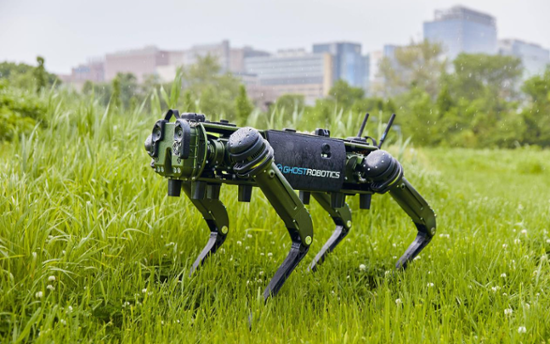Ghost Robotics’ four-legged robot product / Courtesy of LIG Nex1
Author: Cho Dong-chan
LIG Nex1 has acquired a controlling stake in Ghost Robotics, a Pennsylvania-based robotics development company.
The South Korean defense company said on Tuesday it invested 332 billion won ($240 million) in U.S.-based acquisition specialist LNGR together with Korea Investment Private Equity to acquire a 60 percent stake in Ghost Robotics on July 26. The ownership ratios of the two Korean companies were not disclosed.
Founded in Philadelphia in 2015, Ghost Robotics is considered one of the most advanced technology companies in the field of quadruped robotics.
Ghost Robotics says its flagship drone, the VISION 60, is agile and durable enough to be used in a wide range of unstructured urban and natural environments for defense, homeland security and enterprise applications, and can also operate underwater.
With a battery life of up to 10 hours, the drone can also be fitted with a variety of equipment for different purposes. Each part of the product is modular and can be easily repaired or replaced if damaged.
“We are pleased to partner with LIG Nex1 and embark on this exciting new chapter for Ghost Robotics,” said Gavin Kennealy, co-founder and CEO of Ghost Robotics.
“Their investment and strategic guidance will accelerate our growth and strengthen our ability to deliver breakthrough robotics solutions to a broader range of industries and applications.”
LIG Nex1 said the acquisition will not only contribute to South Korea’s recent defense efforts with unmanned combat systems, but also to various public safety management tasks such as fire detection, search and rescue operations, and partially replacing guide dog service activities.
“The acquisition of a majority stake in Ghost Robotics is perfectly aligned with our vision to lead the future of defense and security technology,” said Shin Ik-hyun, CEO of LIG Nex1.
“We expect this acquisition will be a driving force for our mutual growth based on our two companies’ cutting-edge technological capabilities and close collaborative relationship.”

